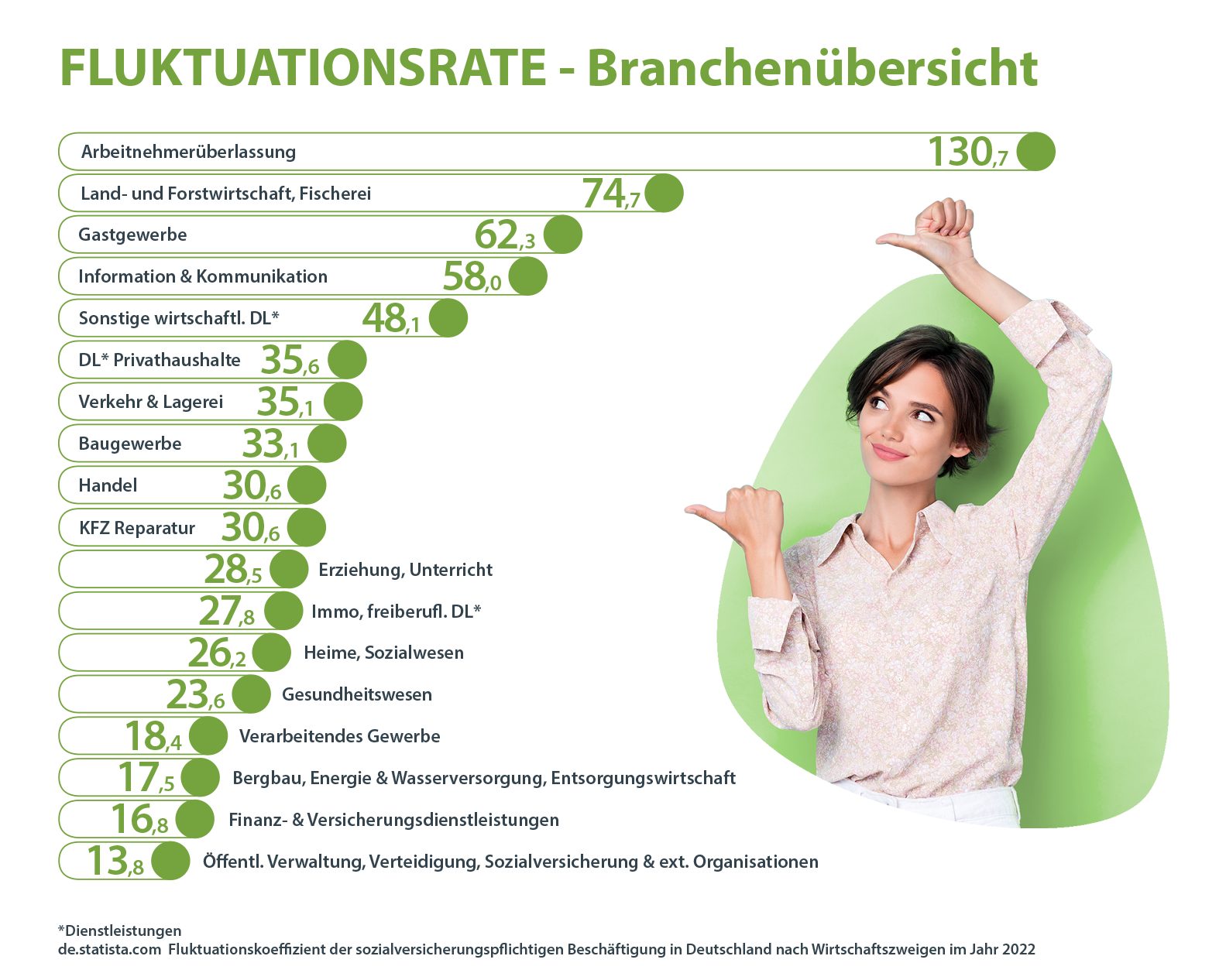Calculate fluctuation costs and fluctuation rate
Most companies do not know how high their turnover costs actually are and do not like to talk about them. This is mainly because poor scores here are indicative of their own leadership qualities and could damage their reputation.
According to the Gallup report, 70% of the factors that cause job dissatisfaction are directly linked to the management level. It is therefore not surprising that many employees do not leave the company, but their bosses.
Each of these terminations increases your company's fluctuation rate and costs money. A lot of money. The Gallup Institute estimates the economic costs of employee turnover in Germany at up to 118.4 billion euros per year.
Fluctuation costs on average
Various studies and research have attempted to provide an estimate of turnover costs. Some estimate that turnover costs can be around 50% to 150% of an employee's annual salary. This means that if an employee has an annual salary of 50,000 euros, for example, the turnover costs could be between 25,000 and 75,000 euros.
Calculate fluctuation costs and fluctuation rate
But what to do? First of all, it is important to calculate the fluctuation costs and the fluctuation rate in order to know the status quo. Various measures, such as PERSENTIS Analytics, can then help to reduce the fluctuation rate and the associated costs.
Direct and indirect exit costs
Employee turnover costs include not only the direct costs of recruiting and training employees, but also indirect costs such as productivity losses, quality reduction, additional workload for existing employees and possible effects on the corporate culture.
Direct costs
- Severance payments
- Recruitment costs: advertisements, recruitment agencies, selection processes, ...
By the way: A detailed target profile helps you to fill your vacancy with the right person. Try it out now! - Induction costs: training, induction and support from colleagues, materials, ...
Indirect costs
- Exit interviews: between HR and managers and the employee
- Productivity losses: Loss of time during the induction phase until the new employee is fully productive.
- Quality losses: Possible errors or quality deficits during the familiarization period.
- Additional workload: for existing employees who have to take on additional tasks.
- Impact on corporate culture: Staff turnover can lead to dissatisfaction and uncertainty among the remaining employees.

Fluctuation in a sector comparison
Numerous factors such as location, average age of employees, retirement or the sector of your company play a role in the fluctuation rate. While the average fluctuation rate in administration, for example, is around 10%, seasonal working conditions in the hotel and catering industry lead to a fluctuation rate of more than 50%.
Calculate your fluctuation rate easily and free of charge here:
Effectively reduce fluctuation costs
Instead of spending vast sums of money and man-hours on new job advertisements, training and staff recruitment, it makes more sense to find out from the existing team where the shoe pinches and what needs to be done to improve the mood in the team!
The 360° software system PERSENTIS helps to find the right employees, increase loyalty and motivation and reduce fluctuation costs .The key to this lies in measuring and understanding expectations and motives. In this way, you can counteract possible dismissals, reduce staff turnover in your company and reinvest the resulting savings in dismissal costs in a meaningful way. In your employees, for example! Because: People move companies, not the other way around!



